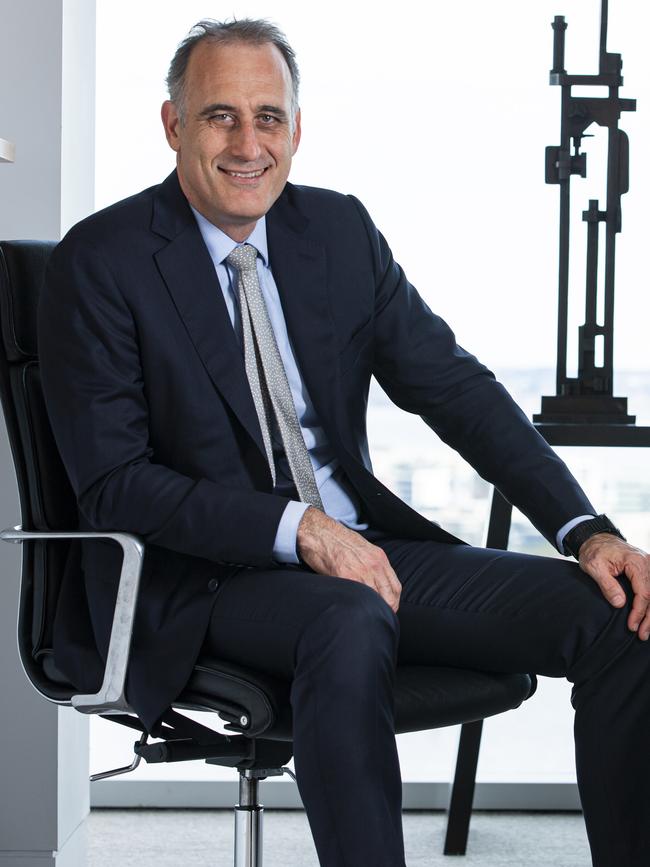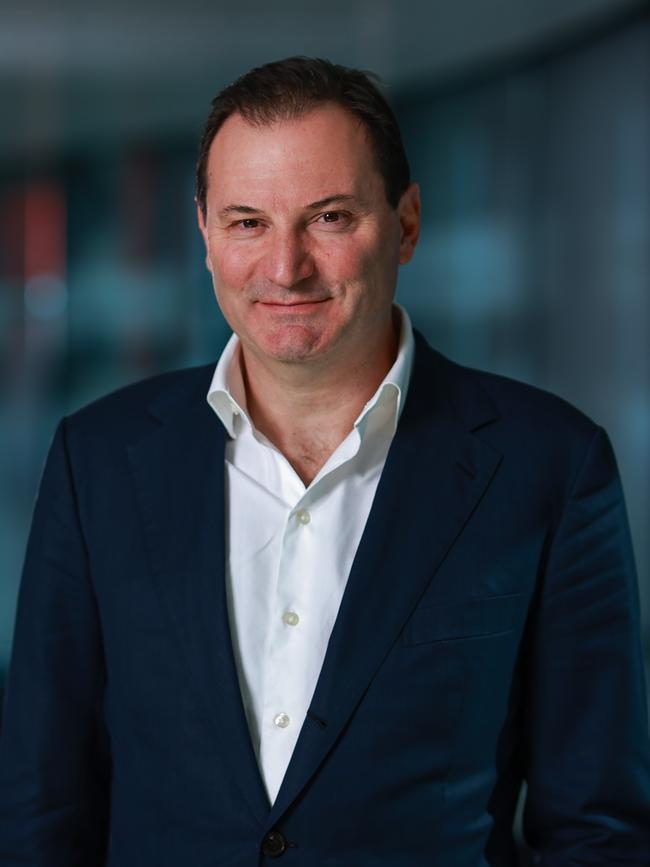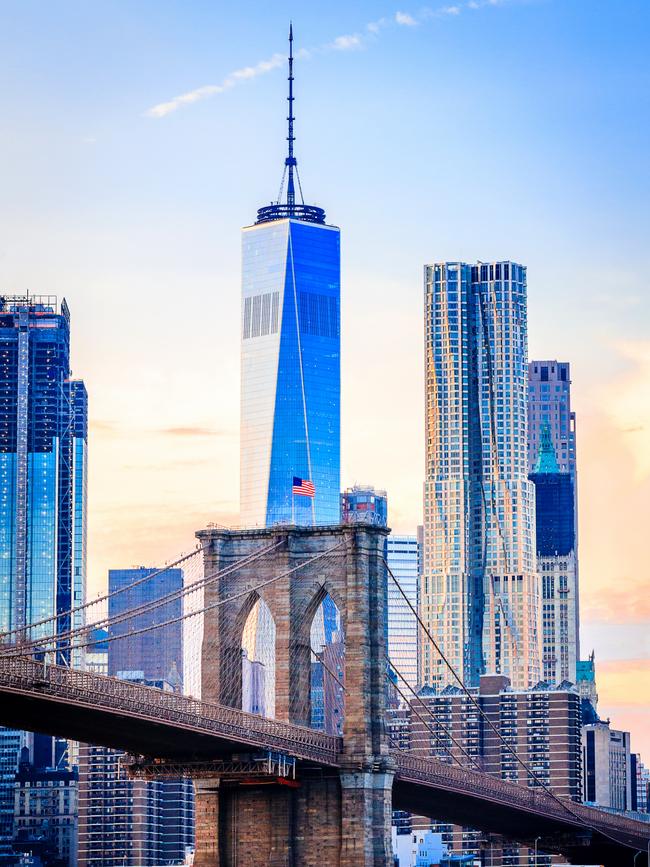
BlueScope chief executive Mark Vassella says BlueScope has “ambitious” but realistic targets in place for shifting to green steel, and this will be through incremental change rather than a green revolution.
This is not to say BlueScope is backing away from efforts to cut carbon from the steelmaking process, but he cautions that a lot of things need to go right to secure a step-change in cutting emissions.
The first big problem is that hydrogen technology just isn’t able to be commercialised in terms of production for the widely used blast furnace method. Adding to this, extremely high energy intensity is needed to make hydrogen – 15 times BlueScope’s current electricity use.

BlueScope sits at the forefront of steelmakers looking to shift to green technologies, and Vassella’s top engineers have indicated that a breakthrough in green hydrogen technology for steelmaking is unlikely by the end of this decade.
This means in the short term BlueScope will have to drive efficiencies to lower emissions.
The comments provide some welcome caution to big promises that green hydrogen is the miracle input that can rapidly change steel manufacturing.
BlueScope’s position also underscores the size of the challenge, with entire economies needing to be retooled to work towards reducing emissions.
Currently the task in producing green steel is twofold for BlueScope and all steelmakers. Carbon is a critical ingredient in the blast furnace process for making steel – which is how 70 per cent of the world’s steel production is made today. Carbon helps the furnace burn hotter, whereas hydrogen has an “endothermic reaction” that instead sucks heat out of the process, which is not good for steelmaking.
Hydrogen burning would require a change in the type of ore to top-quality magnetite. Nearly all the ore mined and sold – including from Australia’s Pilbara mines – is hematite, and it is not sufficient quality to be used in a hydrogen-based smelting process.
The energy puzzle remains the biggest challenge for hydrogen, with renewable energy and firming capacity needing to increase significantly. The electrolysers that split water to make the gas also need to become substantially more efficient in terms of energy use. To move to commercial green steel production using current technology, BlueScope estimates it would need an electrolyser that is likely to consume about 10 per cent of NSW’s current energy generation capacity. All up, there is a lot of technology and investment that needs to come quickly.
Small steps
For now BlueScope is taking more modest steps. It’s proposing to build a 10 megawatt electrolyser that would be powered by renewable energy. And then it will use that to test and trial injecting hydrogen into the blast furnace.
It is also looking at relining its No.6 furnace in Port Kembla, which is now dormant, to give it an option for producing green steel overnight.
Elsewhere scrap or recycled steel has a big role to play in decarbonisation, but this application will be very limited. Vassella says there is simply not enough scrap metal in the world to meet growing demand for steel.

Vassella is not fazed by the challenge to get to net zero. He says sustainability is part of BlueScope’s DNA, with all of the business units focused on the issue every working day.
“I think we’re uniquely positioned to play a significant role in that transition,” he says.
BlueScope aims to cut its carbon emissions by 12 per cent per tonne of steel by 2030 and net zero by 2050.
Sustainability also comes down to “continuous improvement”, which is doing things more efficiently, such as using less raw materials and energy.
Vassella says collaboration with the world’s biggest steelmakers is also the way forward. He likes to remind investors that “steel is going nowhere” and will be central to the transition to the low carbon world, used in building renewable energy capacity.
Based on current projections, Vassella expects Australia will need an additional two million tonnes of steel by 2030 to hit its renewable targets and an extra 10 million tonnes to get to its 2050 targets.
–
Bosses hit the road
CEOs are getting back on the road with the return of face-to-face meetings between big offshore investors, marking the first time in two years they have been able to promote their company.
The Covid-19 pandemic put the annual roadshow on hold but a string of top executives and their finance bosses from the nation’s biggest companies – from Wesfarmers to Telstra, BHP, CSL, QBE, Goodman and Origin – are heading offshore or planning to restart visits.

The tours can be gruelling, with back-to-back meetings with investors in London and New York, and they almost always include a side trip to Boston where global fund giants State Street and Fidelity are headquartered. For some, Toronto is a destination to meet some of Canada’s big pension funds. Investment banks are often used to arrange appointments.
The roadshow has two aims: to maintain support from existing investors and potentially bring on new asset big managers onto the share registry.
Origin CEO Frank Calabria says his energy company is considering an international roadshow in coming months.
“They’re back on after being run remotely for a period of time, but we’re certainly keen to get back out there and see our shareholders and that’s good for us,” Calabria says. Outside the top miners, Big Australian companies generally have less than 10 per cent of their shareholder base held by “pure” offshore investors – that is, funds that don’t have an Australian presence. However, global pension funds are increasingly looking to diversify their investments and Australia offers a destination for long-term, relatively stable returns.

The meetings are an important information-gathering exercise, revealing the top issues on the minds of global investors and the insights they are picking up from international executives. Inflation and how Australians are responding to cash rate hikes are expected to dominate discussions about near-term results, while an update on strategies around decarbonisation will be top of the list for broader longer themes, particularly among US investors.
One executive preparing to leave for London says the “two-way discussion” was largely missing from virtual briefing held during the pandemic.
For some CEOs, including Telstra’s Vicki Brady or QBE’s Andrew Horton, this is the first opportunity to meet global investors since taking charge.

The meetings are also being held at a time of extreme stress on investment markets, with weak global growth and shares under pressure as central banks around the world rapidly push up interest rates.
Retail and industrial major Wesfarmers’ three biggest shareholders are US-based.
BlackRock, State Street and Vanguard are index funds, but they are becoming more active when it comes to environmental, social and governance issues.
BHP has more than 5 per cent of its overall share mix held by US investors, and due to its former dual-listed structure it still has a large proportion of big UK-based shareholders.

While Australian executives usually hold the power when it comes to meeting fund managers in a smaller market, here they soon realise the tables are turned when it comes to competing for the attention of offshore investors. It can be a tough experience, given the Australian company could be one in as many as 20 global companies operating in the same sector, presenting results on the same roadshow.
One CEO of an ASX top 15 company said during a previous roadshow they were allocated just 10 minutes with an influential US investor.
The asset manager hadn’t gone through the accounts and the Australian CEO recalls he was told to “come back when you have a growth story to tell”. The executive has a visit scheduled with the same investor again.
johnstone@theaustralian.com.au




Australia’s biggest manufacturer, BlueScope, has mapped out the challenges ahead in using green hydrogen to make the shift to lower carbon emissions for steelmaking – and it is clear change is not coming this decade.